Related Tags
“I have an idea in my head, and I don’t see any reason I can’t accomplish it”: Dave Friedman talks motivation and sound
After three decades as an amplifier guru to the stars, Dave Friedman knows a thing or two about classic British rock tone and claims there’s plenty of life left in the 100-watt amplifier head.
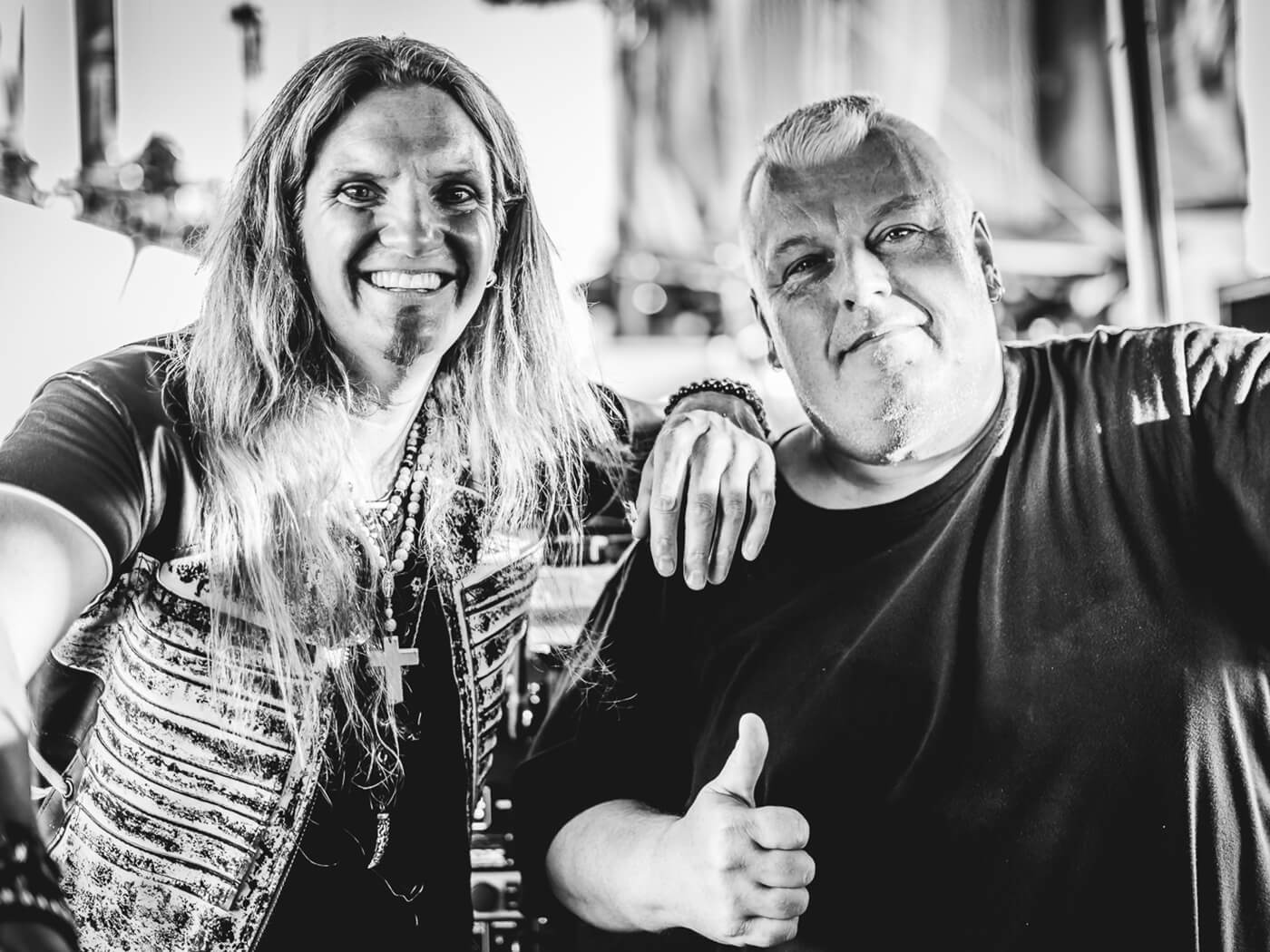
Dave Friedman (right) with Joel Hoekstra of Whitesnake [Image: Jeff Schultz]
Laced throughout the history of guitar amplification is a rare cadre of amp-makers who somehow ‘had the ears’ to identify and dial-in the sounds that players were seeking. Dave Jennings undoubtedly had ’em with JMI/Vox, Howard Dumble’s ears are legendary, likewise Ken Fischer of Trainwreck fame. And more recently, Dave Friedman has proven himself time and again able to nail the tones that fuel 21st century rock.
If he’s heard it once, he’s heard it a thousand times: “Some people have said my amps don’t sound like a Marshall. Well, first off, what Marshall are you referring to? And what reference point? It doesn’t sound like a JVM? Or a 900 or a 2000 or an 800? They’re all different. Or a Plexi? When someone says the word ‘Plexi’, what Plexi sound are you talking about? Are you talking about AC/DC, or the blown-up Van Halen sort of thing? Or somewhere between the two, classic rock like Free or Led Zeppelin or Aerosmith or things like that? What are you talking about?”
Indeed. What are you talking about? The simple fact is that Friedman has honed that ferocious aural feast we somewhat generically call ‘the Marshall sound’ to the extent that his amplifiers often offer a more direct route to classic British rock tones than the vintage originals themselves. You might think you want a 50-watt Plexi, but try plugging into this Friedman Small Box and Dirty Shirley instead to see what really turns you on.
In a nutshell, if it’s within the breadth of rock guitar, Dave Friedman has nailed that sound. He’s been dialling it in for many of the world’s biggest players for years and, even before you knew Dave Friedman existed, there’s a good chance that killer rock guitar tone you heard wailing from the radio or arena stage was coming courtesy of amps that he’d built or modified.
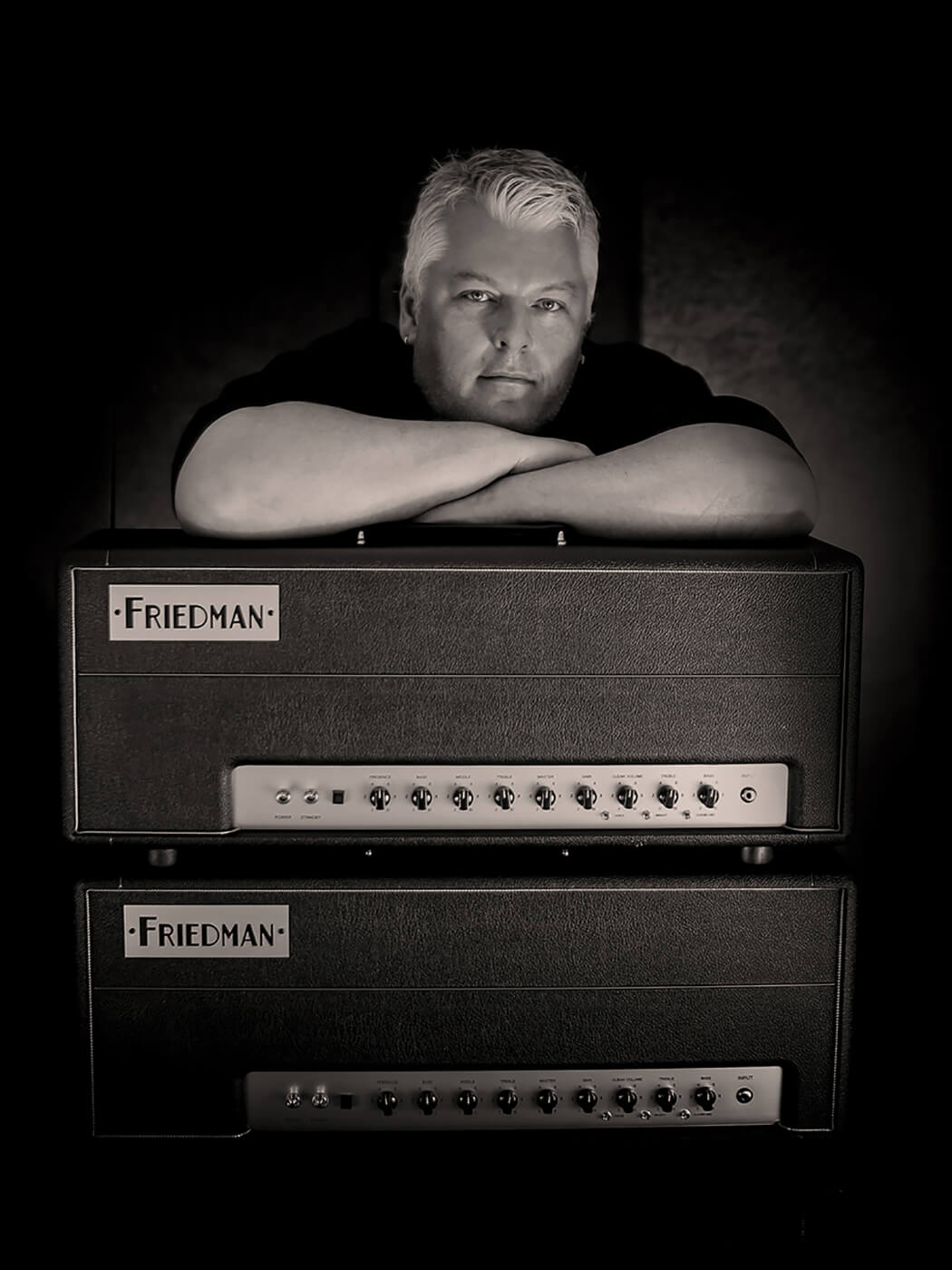
Go west
An avid guitarist and gear nut during his high school years in Detroit, Friedman headed out to California shortly after graduating at the age of 18. He got stuck right in, finding his feet in the LA rock industry and quickly gaining the trust – and the business – of a veritable who’s who of star guitarists.
“I went to work for Andy Brauer Studio Rentals at the age of 18,” Friedman tells us. “They did studio and instrument rentals and cartage for all the top studio musicians like Steve Lukather, Dean Parks, Mike Laundau, Dan Huff – all these guys. And that’s where I started my musical education. He had a guy at the time doing some rigs and racks for him, and that guy left. I had been watching him doing stuff, and I was like ‘Hey, I think I can do that for you!’”
At the tail end of the rack boom of the late 80s and early 90s, Friedman jumped over to working with Bruce Egnater at Egnater Amplification, and was soon a partner in creating several groundbreaking tube preamps and heads, including the original hand-wired, pre-Rocktron, Egnater IE-4 four-channel tube rack preamp.
“[Bruce] was the mentor to my future, as far as amplification goes,” says Friedman. But it’s also clear that the young builder – then still in his early 20s – was extremely motivated. “I was always the driven guy,” he says. “I’ve always worked. I have an idea in my head, and I don’t see any reason I can’t accomplish it.”

Mods and rockers
The gulf between being an in-demand tech and launching his own brand was bridged for Friedman by way of the several amp mods, and eventually, custom-builds that artists began requesting more and more.
“I was dabbling in modifying Marshalls with the IE-4 channel that I had developed,” he recalls, “which would have been some time in the early to mid-90s. At some point in time, and the year will escape me entirely, I did a custom amp by request for Billy Howardell from A Perfect Circle. He really loved this Naylor Superdrive 60 amplifier, but he wanted to merge it a little bit with his 100-watt Marshall. So, the mod kind of was the front end of the Naylor, but some DNA of the Marshall in the power amp.
“That became the amp with which he recorded the first Perfect Circle album, and all the acclaimed stuff he’s ever done after that. And there was a short period of time that I made a run of amps called Naked Amplifiers that were clones of that original amp. This probably would have been late 90s or early 2000s. There were a few amps for the US, and a small run of amps for Japan, like a dozen amps or so.”
Wind your mind back two decades to examine the amp market circa 2000, and you’d think the last thing guitarists would need was another big 50- or 100-watt Marshall wannabe; yet that’s exactly what Friedman delivered, and his amps cut so deeply to the heart of what players were hearing in their heads that they became near-overnight successes. Friedman amps hit the shelves, and soon hard-working journeyman players and weekend warriors alike were finding they had access to the sounds of some of the world’s biggest stars.
Gains and losses
For the man himself, the dual keys to success lay in identifying which classic rock tones players were really seeking, and bottling them into products that would deliver them consistently and efficiently, and at the volumes required in modern venues. As often as not, Friedman tells us, the former lies in a lot less firepower than players often think they need, while the latter requires applying the reins to make it playable.
“Sometimes,” says Friedman, “if you give people the exact sound they’re asking for, maybe even the exact amp – have them play through the exact rig that was used on this or that famous recording – they might be shocked to know that it’s vastly less gain than they thought it was.
“I mean, I make amps that have a lot of gain too, but that’s not necessarily where my head’s at. I do it for the people that want more. I mean, to me, the quintessential amp is an old Plexi Super Lead circuit with a Variac, on 10. That’s where my head is, which is quite gainy if it’s set up right, but old-school gainy. You know, more the Van Halen school of Plexi, shall we say.
“That’s where everything stemmed from originally with my amplifiers. I have an original ’68 50-watt Marshall Plexi that I’ve run for years with a Variac – I used to slave it, I used to do a bunch of things with it – but the initial tone of my BE channel was designed to clone that sound. Sometime I want to have a video done taking my BE-100 Deluxe amplifier and saying, ‘Let’s compare it to a 2203, a Plexi, other classics, and let’s try to clone the sound,’ just because I’m sick of people going, ‘It doesn’t sound like a Marshall,’ you know?”
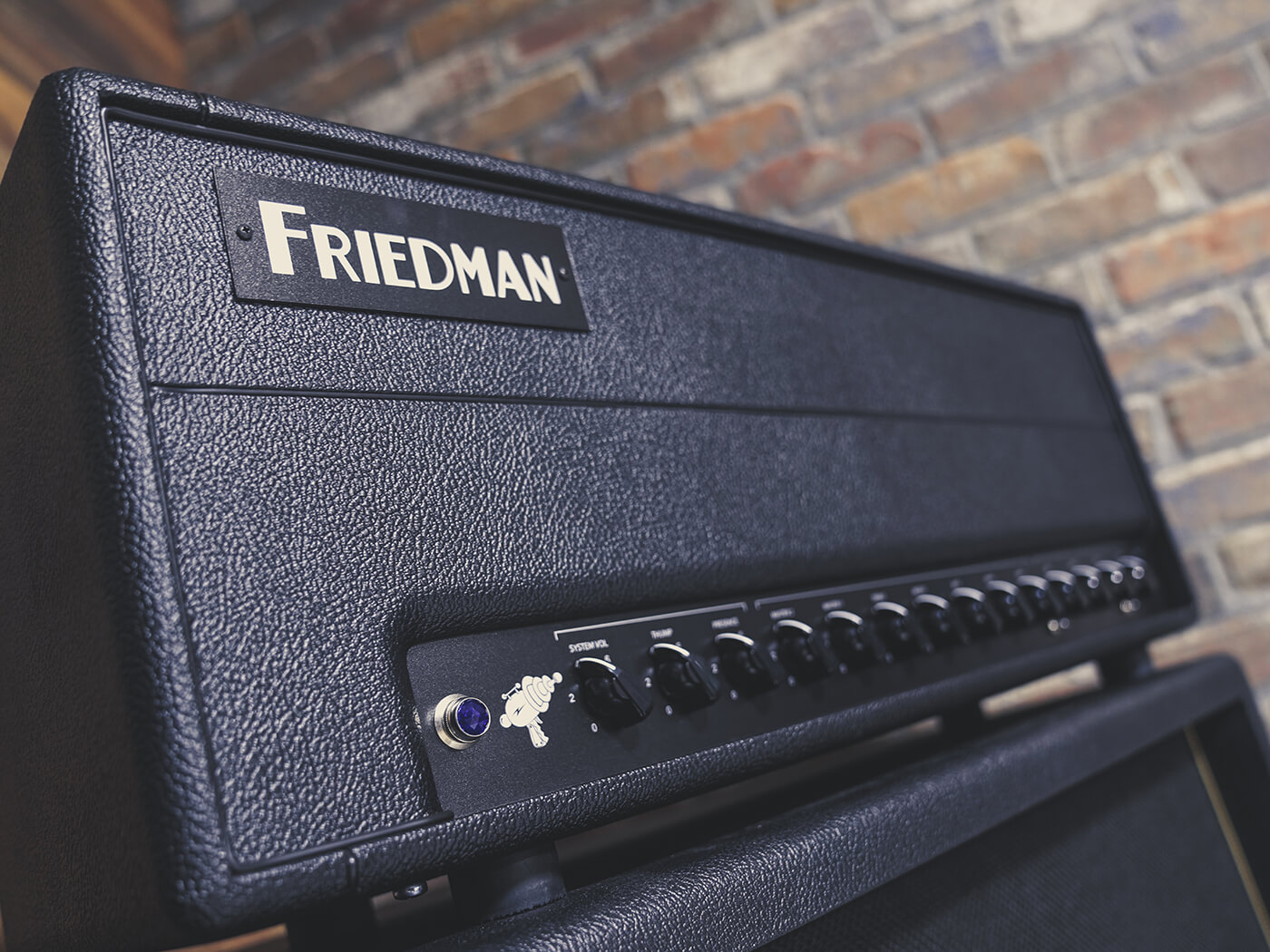
Master mind
One of Friedman’s more notable accomplishments, to the ears of many players who love his amps, is the ability to deliver big-sounding classic rock tones at whatever volume the venue requires – or lack of volume, which is often the case these days. The master-volume circuits on most Friedman amps are nothing particularly original in and of themselves, or even especially advanced. Instead, it’s the way he voices the tone ahead of that stage that enables the big sound at lower volumes, and a consistently dynamic playing feel even at small club or rehearsal levels.
“There’s nothing really special about my master,” Friedman admits, “it’s just how the entire amp is voiced. I voice amps generally at low volumes, and I sort of think of that, like when you’re mixing a record, if you mix at low volumes and get everything really balanced and sounding great, as you turn it up it generally sounds great. Now, if you mix that record at high volumes and then turn it down – do the opposite – it generally doesn’t sound right at all.
“So, I kind of voice the amps at a low volume, and also to sort of feel like it’s cranked-up loud, you know? I don’t put a lot of bass in the front end of the amps, because I find that generally clutters the gain-staging. It sounds more overloaded or farty or however you want to look at it. So, I specifically leave out a lot of low end at the front end of the amp, but it’s made up for in the power amp a bit. So, with all of that voicing and the preamp changes and everything, that’s part of why that master seems to work great. No one else makes 100-watt amps any more, and we manage to sell an awful lot of them.”
To clarify, Friedman confirms that the individual channel masters in his amps – which is all that most of them have – are not the vaunted post-phase-inverter master volume that so many amp fanatics and DIY-ers rave about these days, but good old end-of-preamp-stage masters that rein in the fury prior to the phase inverter.
“The post-phase-inverter is an interesting concept,” he muses, “but I don’t generally care for it, because it takes the negative feedback loop out of the amplifier, so as you turn it down you’re losing some of that negative feedback loop, and the amp is brighter and harsher. There are some ways to kind of compensate for that, but it changes the frequency response.
“These days I’d much rather use something like a Fryette Power Station. Especially the new 100-watt model he came out with recently. That’s amazing sounding. I had a client I did a rig for, Toshi Yanagi, who plays on the Jimmy Kimmel show, and that was the first time I heard the 100-watt version – I have the other version – and I’m friends with Stevie [Fryette] so I texted him and I was just cursing him out, ha ha. ‘Goddamn you for making an even better product!’”
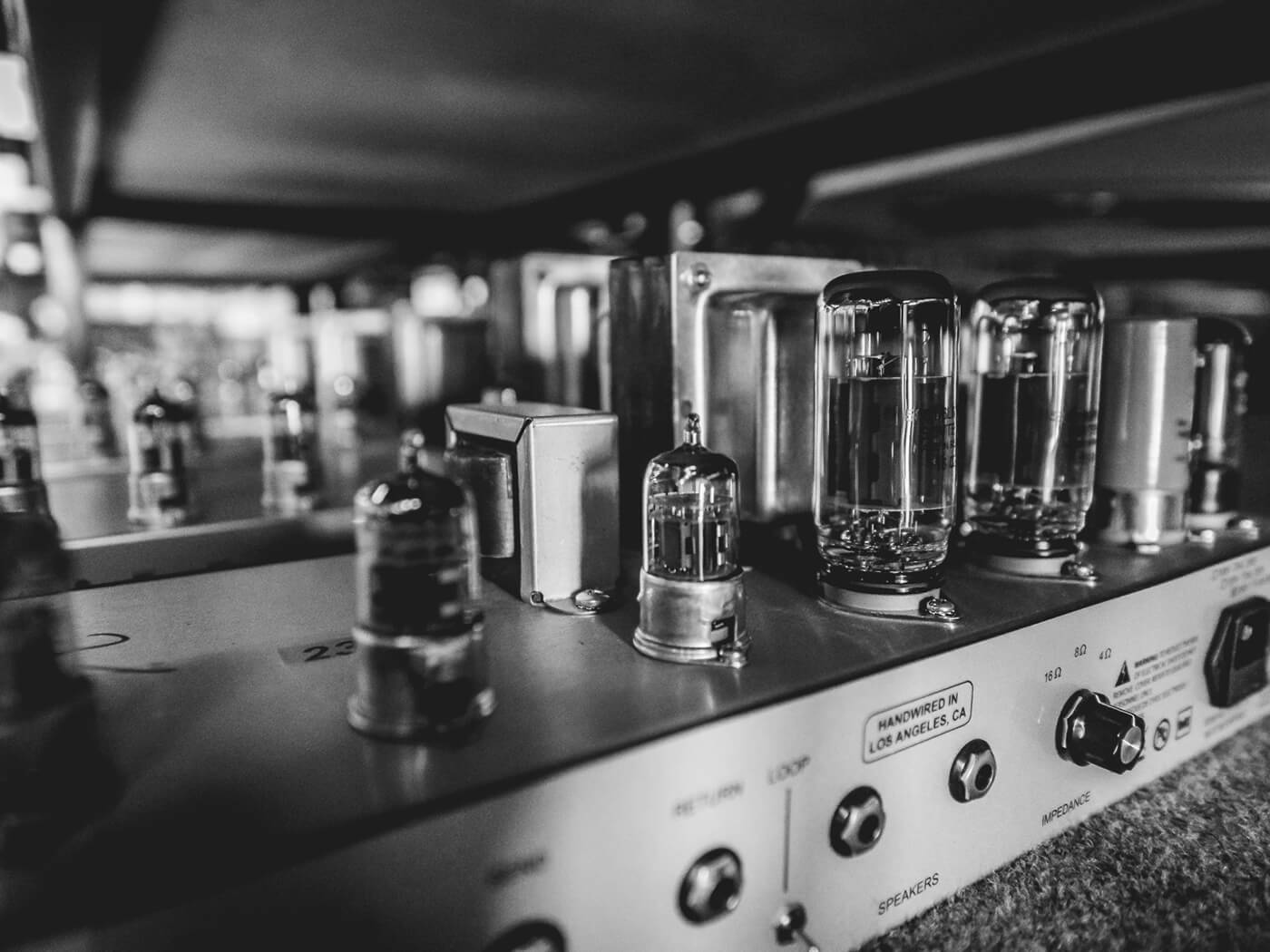
Star gazing
Having headed to LA in the footsteps of his many guitar heroes some 33 years ago, Friedman is now deep into a career during which he has been privileged to work with many of them. “The funny thing was,” says Friedman, “Steve Stevens was a favourite, Eddie Van Halen was a favourite, Jake E. Lee, George Lynch, Warren DeMartini – I mean, this is the era – Angus Young, Jimmy Page. Later on I was a big Ty Tabor fan, and all the classic stuff too. Aerosmith and Free and things like that. But most of those players I’ve worked for. I think the only one I haven’t yet, although that might be happening soon, is Warren DeMartini.”
The latest signature model out of the Friedman stable is the JEL-100, a scorching, hand-wired, limited-edition 100-watt head created for former Ozzy Osbourne guitarist Jake E. Lee.
“He hasn’t really been a relevant guitar player since he came out of the 80s era with Ozzy – he disappeared for a number of years and then he came back,” Friedman explains. “So, I did the project just as kind of a fun project for myself. But a guy at Fender told me, ‘Wait, you’ll see. We’ve sold an awful lot of his guitars with Charvel. More than we ever thought we would.’ We went to NAMM with this amp, and we sold 150 100-watt heads in two days. Just… gone. And that’s the limited edition red, signed amp that’s $3,700. So apparently the 100-watt’s not dead. And there are certain iconic artists that are still viable to a lot of people in the market.”
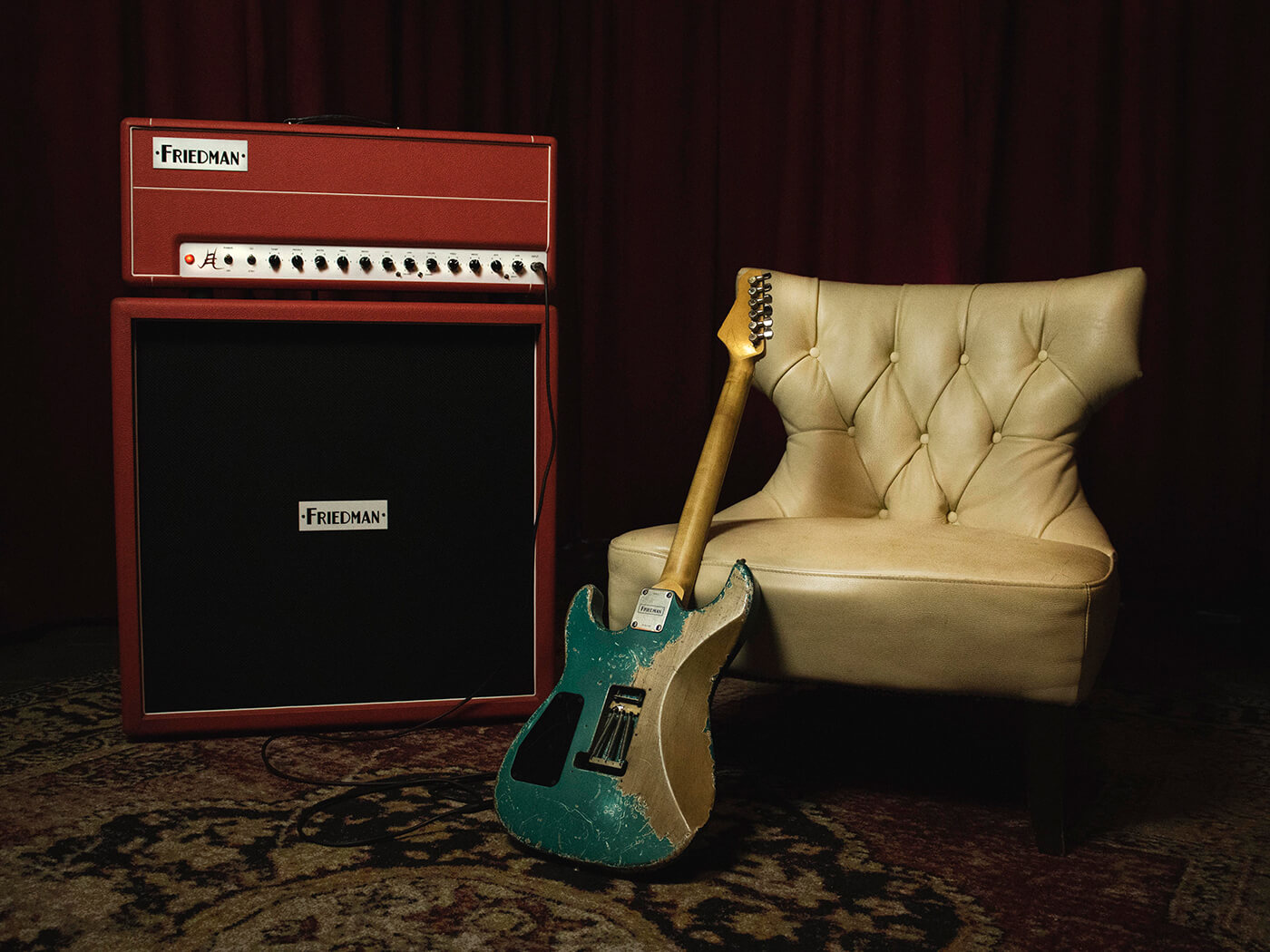
Although Friedman’s amps are all vintage-inspired in many respects – given most have some sonic DNA derived from his favourite ’68 Plexi-and-Variac topology – the company hasn’t produced any models based directly on classics of the late 1950s and early 60s… yet.
“There still is a business model in my head,” he reveals, “to do a vintage series of amps. Some of it would be British and some of it would be American. And I’d really like to do that, because that’s where everything came from; what’s my take on it? So, I would do it in some way that would be cloning, like my ’68 Plexi 50. Or, ‘Here’s this special Vox AC30 that we have,’ something interesting like that. That might be happening in the future. Although the future, right now, is a little unsteady.”
Unsteady or otherwise, we can be certain that Friedman’s amplifiers will be behind much of the music when it finally returns in full force… and we haven’t even made it to his pedals, pickups, or the new line of guitars designed in conjunction with Grover Jackson – all fodder for another time.
Visit friedmanamplification.com for more.
